Did John Glenn Ask for the Woman to Check the Launch Again
/https://tf-cmsv2-smithsonianmag-media.s3.amazonaws.com/filer/75/9f/759ffa16-054d-438e-9379-6bddbe2f4b95/npg2008.jpg)
John Glenn flew daringly as a fighter pilot in two wars, rocketed into space to become the offset American to orbit the World, served Ohio in the U.S. Senate longer than any other state leader, and returned to space in 1998 every bit the oldest human to break the bonds of gravity. Amazingly, these are merely a few of the achievements that filled the remarkable life of an American patriot.
Similar all of us, Glenn suffered failures alongside his successes, but they did not diminish his many accomplishments or his fascinating life. Remnants of Glenn's life, such as his spacesuit from his 1962 orbital flying and his capsule, the MA-6 otherwise known as Friendship 7, at present reside in the Smithsonian'southward National Air and Space Museum, where his space travel is historic. Several images, spanning his career, reside in the National Portrait Gallery and still more artifacts and images from his storied life are held at the National Museum of American History.
Glenn grew up in an Ohio village—New Concord—where he wasted no time finding the dearest of his life, Annie Castor. They met in a playpen while their respective parents enjoyed a dinner party. The couple started dating in early adolescence and stayed together until his death at 95 in 2016. He never dated another woman.
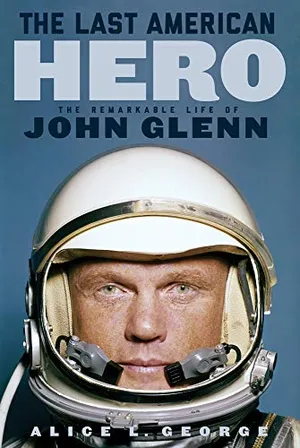
The Last American Hero: The Remarkable Life of John Glenn
The Last American Hero is a stunning test of the layers that formed the human: a hero of the Cold War, a two-time astronaut, a veteran senator, a devoted married man and father, and much more. At a fourth dimension when an increasingly cynical earth needs heroes, John Glenn's aura burns brightly in American memory.
In December 1941, when a swarm of Japanese planes attacked Pearl Harbor, he was a higher educatee, simply he rushed to enlist in the military, becoming a marine fighter pilot. In Globe State of war II, he flew 59 missions in the Due south Pacific and had the opportunity to piece of work with his childhood hero and fellow aviator, Charles Lindbergh, who represented an airplane manufacturer and sometimes flew alongside Glenn's squadron. At the war's end, Glenn decided to make service in the Marine Corps his career. Shortly, he and Annie celebrated the arrival of 2 children, David in 1945 and Lyn two years later.
Only seven years later World War II's end, he found himself at war defending South korea from a North Korean invasion. This battleground experience came with an unexpected perk—the opportunity to fly with baseball star Ted Williams equally his wingman. Glenn flew ninety successful missions in Korea, and while on assignment with the Air Force, he downed three Soviet-made MiGs in the last nine days of the war.
Glenn spent part of the 1950s in a job he adored, being a test pilot, but he also worked several years every bit a frustrated paper-pusher at the Agency of Aeronautics. Using his own initiative, Glenn found a fashion to go dorsum into the air, even if it was for only one twenty-four hour period. He proposed a plan to break the existing transcontinental flight record and test a new plane, the Vought F8U Crusader, simultaneously. Crossing from Los Angeles to New York in three hours, 23 minutes, eight.iv seconds, he shaved more than than 23 minutes off the old record. Soon afterward, he was invited to appear on the game show, Name That Tune. Partnering with 10-twelvemonth-old actor-singer, Eddie Hodges, he shared the top prize of $25,000.
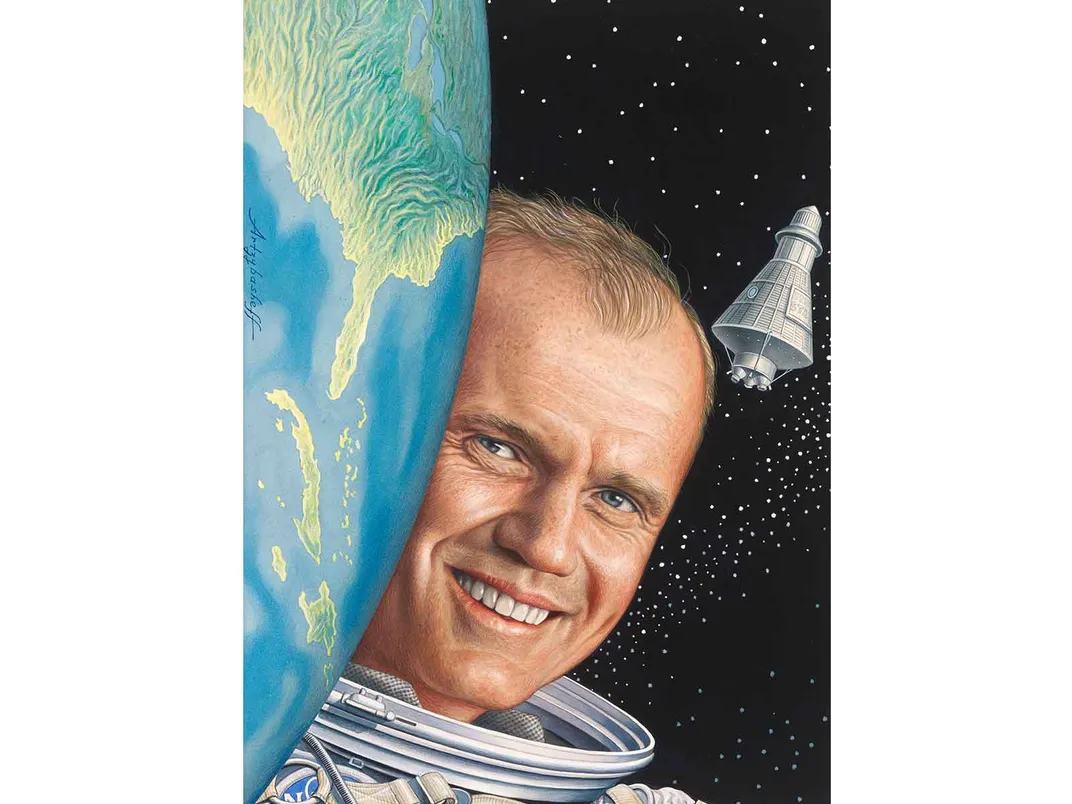
Glenn'south time to come was about to take a right plough. The Soviet Union's launch of Sputnik, the showtime manmade satellite, in 1957 forced the Usa to hasten the bulldoze for infinite exploration. By early 1959, the National Aeronautics and Infinite Assistants began recruiting experienced test pilots to bring together the nation's first manned infinite program, Projection Mercury. Equally was his habit, Glenn stepped forward. From 510 applicants, officials were able to cut the list to 32, and after a series of odious physical and psychological tests, he emerged as one of seven astronauts.
Glenn wanted to be the first human in infinite or at to the lowest degree the first American in infinite; however, Yuri Gagarin claimed the showtime title, and Alan Shepard took the second. Nevertheless, in 1962, when Glenn became the first American to orbit the Earth and the beginning space traveler to have such a voyage with consummate minute-by-minute news coverage, he won acclaim both nationally and internationally. His reputation soared later Americans heard his phonation remain steadfastly at-home, even afterwards learning that his heatshield might be loose and that he might burn up when passing through the Earth's atmosphere before splashdown. Safely back on Globe, a ticker-tape parade and a articulation coming together of Congress welcomed his return. He had become America's space star, while Shepard simply became lost in his shadow.
As America's about famous astronaut, he found it oddly disheartening that he wasn't scheduled for any future flights. He did not know that President John F. Kennedy had urged NASA not to risk his life because of his inspirational value to the American public as a hero. In the wake of Kennedy's November 1963 assassination, Glenn felt a call to public service. Consequently, he left NASA in 1964 to seek a U.S. Senate seat from Ohio. Unfortunately, the spaceman suffered a fall in an earthbound bathroom that left him with a chronic dizziness, which forced him to abandon the race.
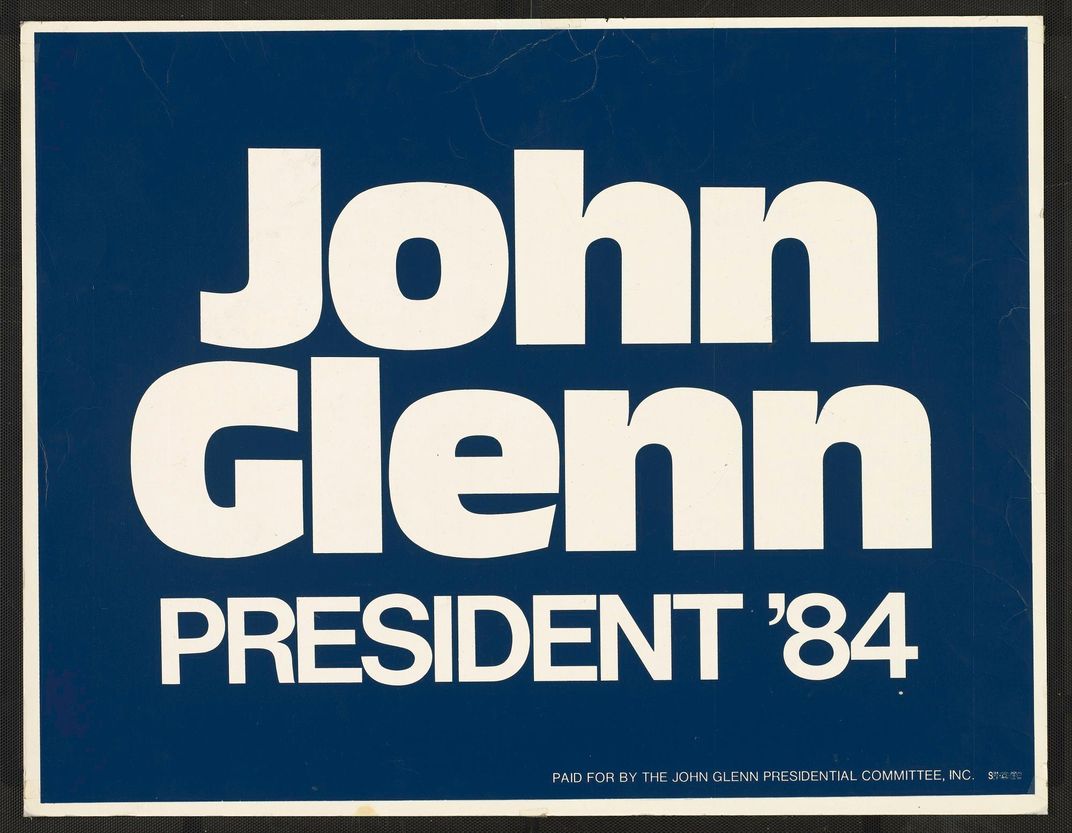
Four years later and recovered, Glenn was back on the campaign trail, this time with his friend, Sen. Robert Kennedy of New York, who was seeking the Autonomous presidential nomination. When Kennedy was shot at the commemoration of his California primary victory, he survived surgery, only his pregnant wife, Ethel, asked the Glenns to escort those of their children who were in Los Angeles back to their Hickory Hill dwelling in Virginia. The next morning time, Glenn joined a neighbor in sitting on each kid's bed and delivering the news that their father had died.
Coming out of 1968, Glenn decided to re-appoint in politics and once more sought Ohio'southward Autonomous nomination for the U.S. Senate; however, he lost. In 1974, he would attempt information technology once over again and win. Ultimately, he served iv consecutive half-dozen-year terms—more than whatsoever previous Ohio senator. Over the years, he pushed through a nuclear not-proliferation treaty, and he promoted legislation to ameliorate the efficiency of Washington's bureaucracy.
Later a 1980 landslide victory, some urged Glenn to seek the presidency. He launched a campaign, and polls showed that he was a potent contender. Nonetheless, he lost badly in the early on primaries for the Democratic nomination and dropped out after defeats on Super Tuesday, ending his campaign with a huge debt considering of flaws in his organization.
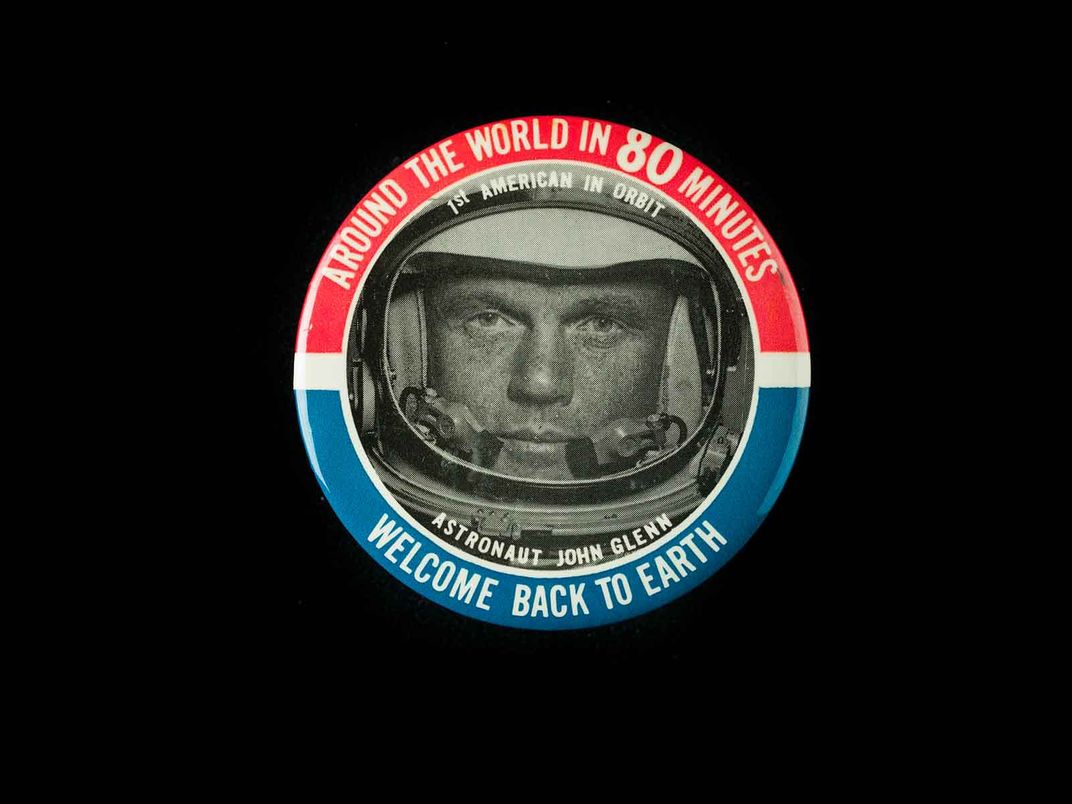
Even when he stood accused of wrongdoing, his reputation was simply slightly tarnished for it. In 1989 and 1990, Glenn found himself in the unusual position of being charged with unethical beliefs in the collapse of the savings and loan industry. He was identified as one of the "Keating V," senators who had met with savings and loan head Charles Keating and had received campaign funding from him. In the terminate, the Senate Ethics Commission cleared Glenn of the more serious charges and found him guilty of only bad judgment in arranging a luncheon betwixt Keating and the speaker of the house.
Glenn announced in early 1998 that he would retire and not seek re-election in November, when he would exist 77. He had higher goals for himself. He wanted to return to space. Subsequently passing many tests and selling NASA officials on the value of examining the medical effects of infinite travel on an older American, he rode into Earth orbit in late October as one of seven astronauts on the shuttle Discovery. As the lowest ranking crew fellow member, he helped with experiments and served every bit a glorified guinea grunter. For nine days, he got the opportunity to view his home planet from outer space for a second time. This expedition was his last major venture, although afterwards leaving the Senate, he served on a couple of government panels, taught at an Ohio State schoolhouse that promoted public service and carried his name, and even appeared in an episode of the Television set sitcom, Frasier.
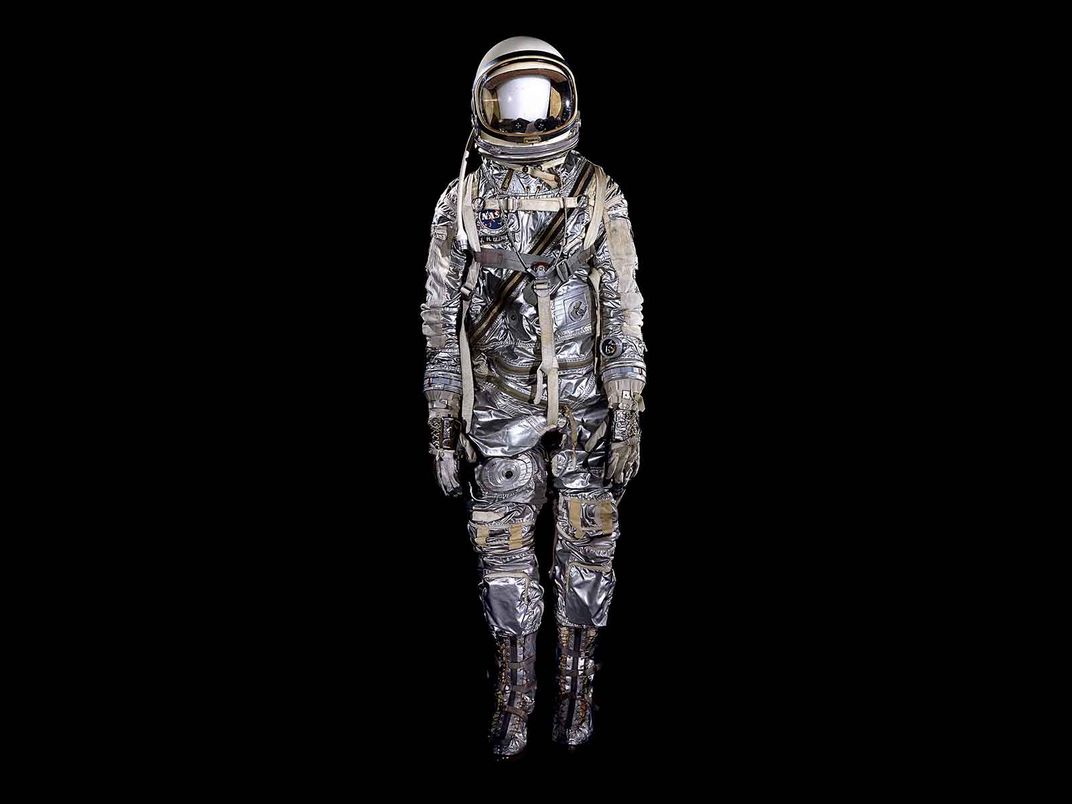
Glenn'south life was more than unusual. It was exemplary. Time and time once again, he volunteered to serve his nation. A friend explained Glenn'south deportment as a Mercury astronaut this way: "John tries to acquit every bit if every impressionable youngster in the country were watching him every moment of the day." In sharp contrast to many politicians today, he never gave upwards the effort to be a good example to his fellow citizens.
Over the years, Glenn traveled the earth. He met cabbies and kings, waitresses and earth leaders. Colleagues and friends noticed an interesting facet of that feel. He treated each person in the same manner, no affair what their condition. And this, peradventure more than any of his many accomplishments, represents the essence of John Glenn, a brave man who never reveled in his own success and valued every man life equally. Even today, at a fourth dimension when many run into heroes merely in fiction, the title however clings to his memory.
The Final American Hero: The Remarkable Life of John Glenn by Smithsonian mag contributor Alice Fifty. George was released by the Chicago Review Press on November 10 and explores this extraordinary homo, spotlighting the many factors that made him unique in American public life.
Source: https://www.smithsonianmag.com/smithsonian-institution/why-john-glenn-couldnt-escape-hero-label-180976440/
0 Response to "Did John Glenn Ask for the Woman to Check the Launch Again"
Post a Comment